The waterfall chart is called Waterfall Plot because it resembles waterfall. A waterfall chart has a top-down flow effect and can also be called a ladder chart (Cascade Chart) or a bridge chart (Bridge Chart), which is commonly used for business analysis and financial analysis. This topic describes how to add data to a waterfall chart and configure the style of a waterfall chart.
Prerequisites
A dashboard is created. For more information, see Create a dashboard.
Overview
Use scenarios
By showing the contribution of positive (income) and negative (expenditure) to the total, the waterfall chart uses a combination of absolute and relative values to express the quantitative change relationship between multiple specific values.
Benefits
Easy data analysis: You can obtain the data sum and period-over-period comparison results with a few clicks.
Visualization effects: column chart effects are supported. You can configure labels, legends, and cumulative values.
Renderings
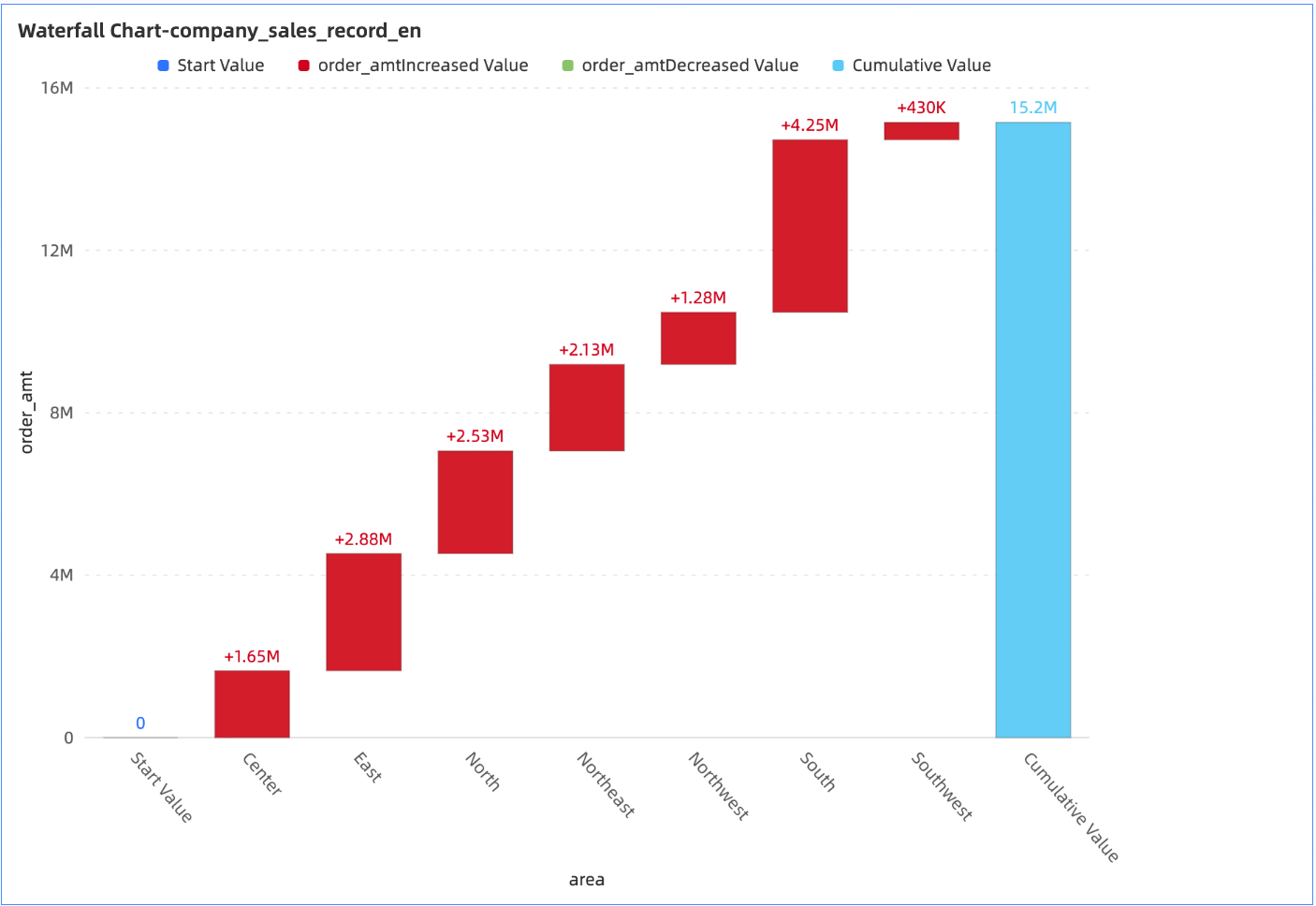
Create a chart
On the Data tab, select the required dimensions and measures.
In the Dimension list, double-click the province dimension. You can also drag this dimension to the Category Axis (Dim.) field.
In the measure list, double-click the order_number measure. You can also drag this measure to the Value Axis (Mea.) field.
Click Update to update the vertical bar chart.
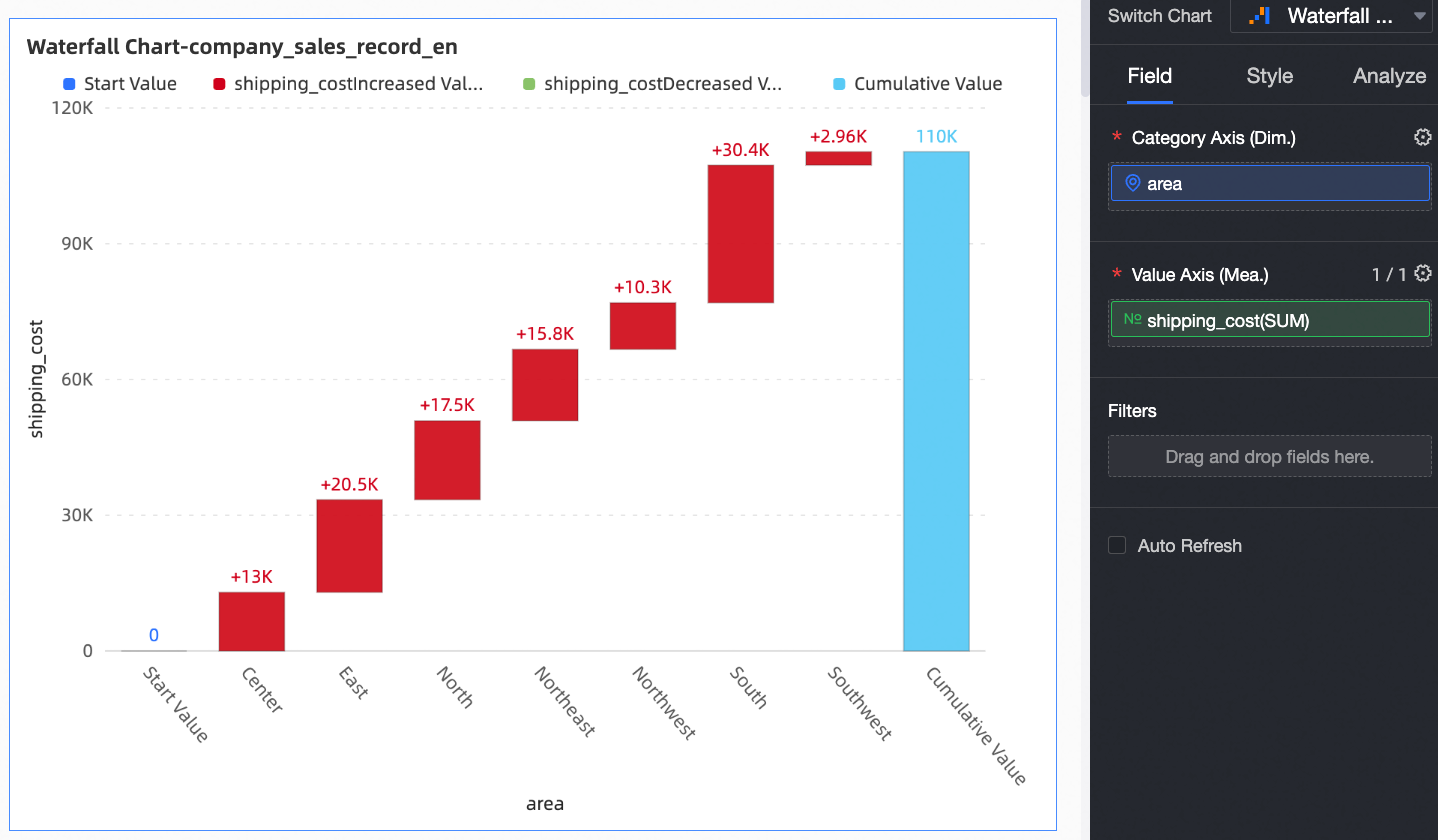
Optional. If a large amount of data is displayed in a province, you can configure a filter to filter the required data.

Configure the styles of the LBS heat map
The following section describes how to configure the styles of an LBS heat map. For information about the common style settings of charts, see Configure the chart title.
You can enter a keyword in the search box at the top of the configuration section to search for configuration items. You can also click ![]() Expand /Collapse All Categories in the right-side chart.
Expand /Collapse All Categories in the right-side chart.
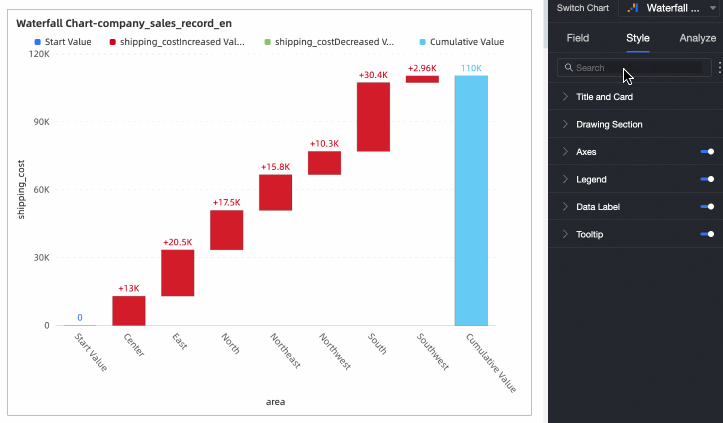
In the drawing area, set the waterfall chart style.
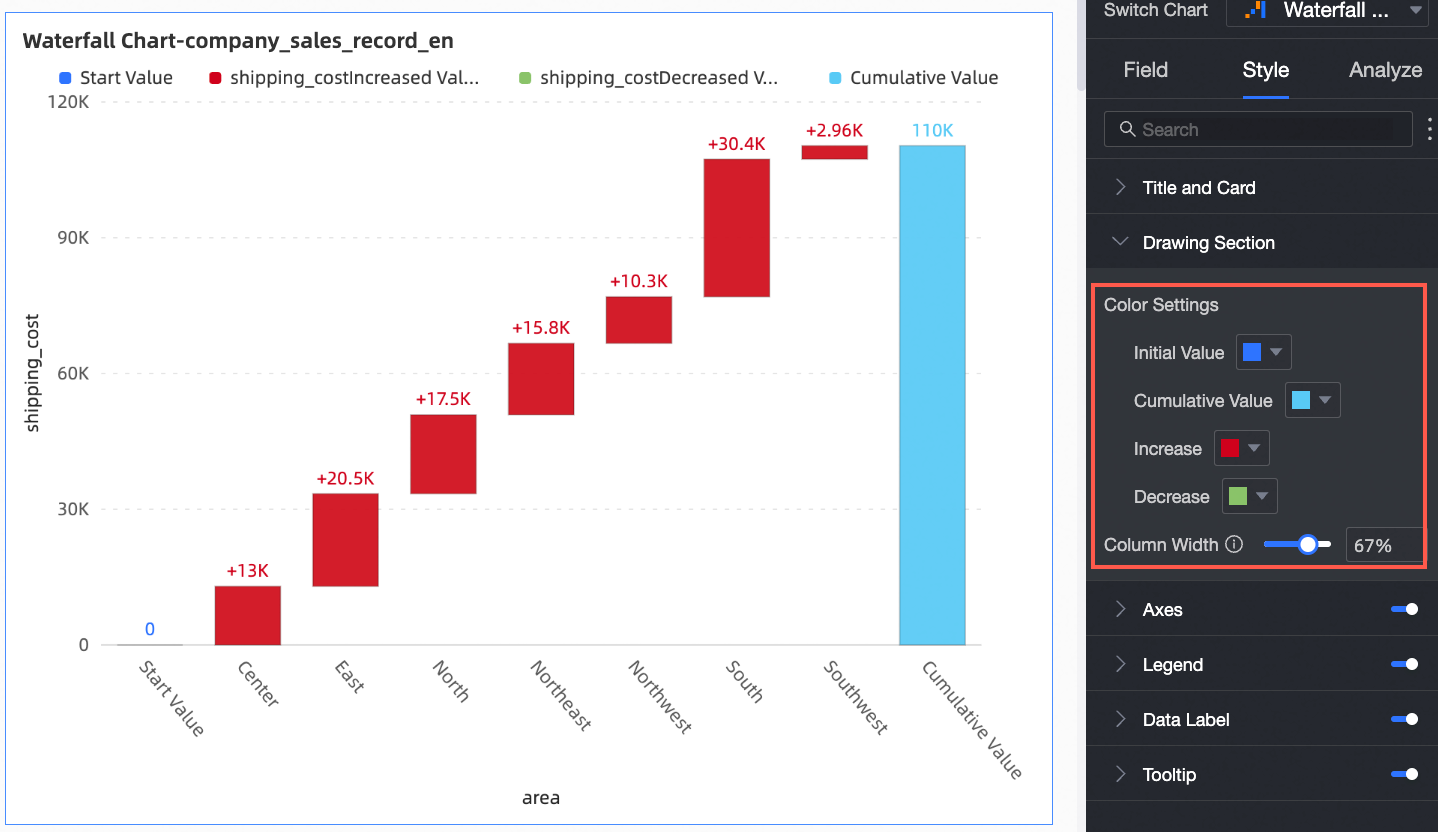
Chart configuration items
Descriptions of parameters
Column Color Matching
Set the Start Value, Cumulative Value, Increase, Decrease color of the column.
Column Width
Sets the width of the column.
In the Axes section, select Show Axes by default.
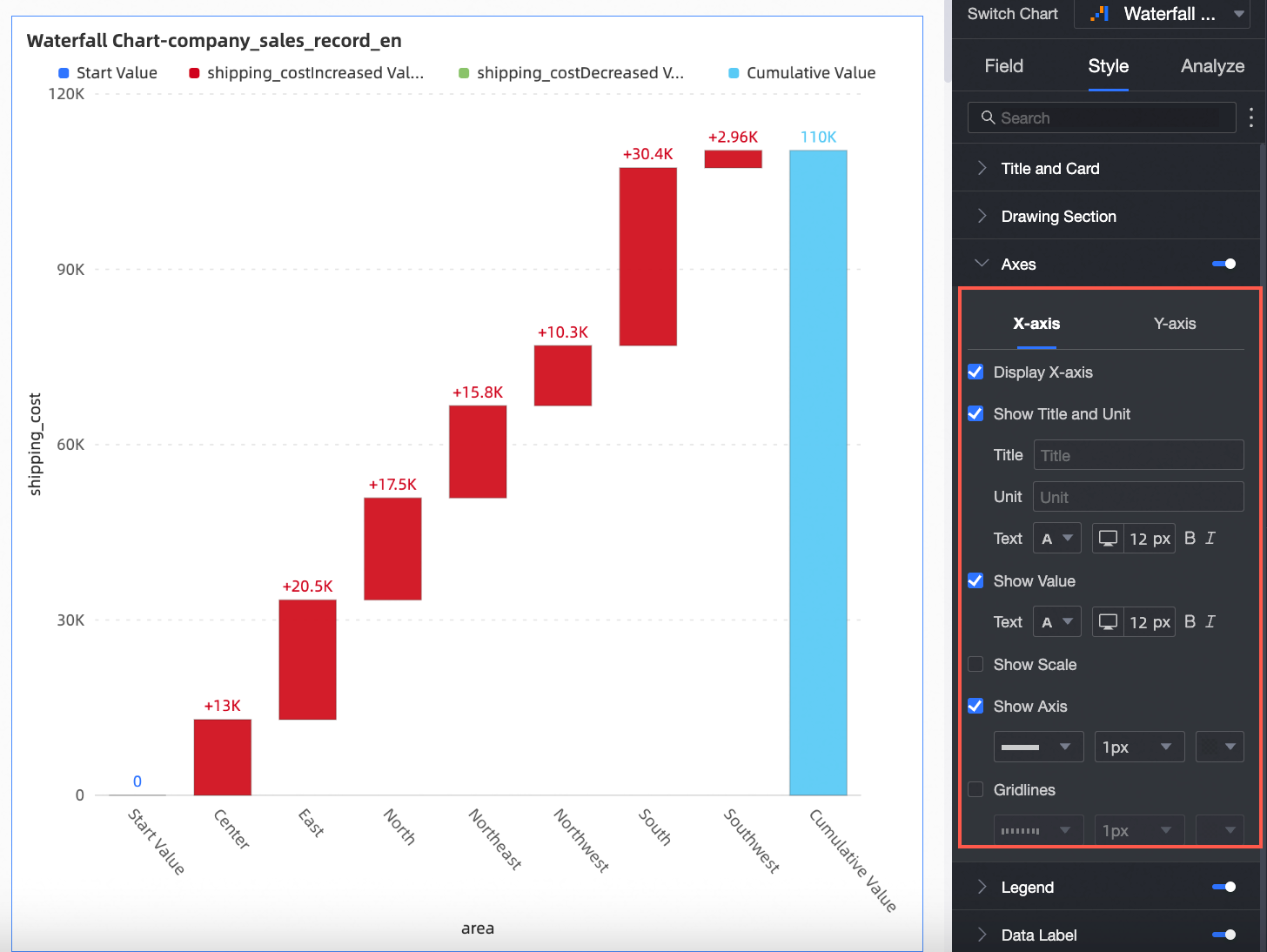
Parameter
Parameter
X-axis
Display x-axis
Set whether to display x-axis.
Show Title and Unit
Specifies whether to show the title and unit of the X-axis.
Show Value
Specify whether to display labels on the x-axis, axis label display rules, and text style.
Show Scale
Sets whether tick marks are displayed on the x-axis.
Show Axis
Specifies whether to display the X-axis, including line style, line width, and color of the X-axis.
Gridlines
Specifies whether to show gridlines on the X-axis, including the line style, line width, and color of the X-axis.
Y-axis
Show Y-Axis
Specify whether to display the Y-axis.
Show Title and Unit
Specifies whether to display Axis Title and Unit.
Show Value
You can specify whether to display labels on the Y-axis. You can also specify Label, Scale Range, and Axis Label.
Show Scale
Sets whether to display tick marks on the Y axis.
Show Axis
Set whether to display the Y-axis, including the line type, line width, and color.
Gridlines
Specify whether to display grid lines on the Y axis, including line type, line width, and color.
In the Legend section, specify whether to show the legend and the legend style.
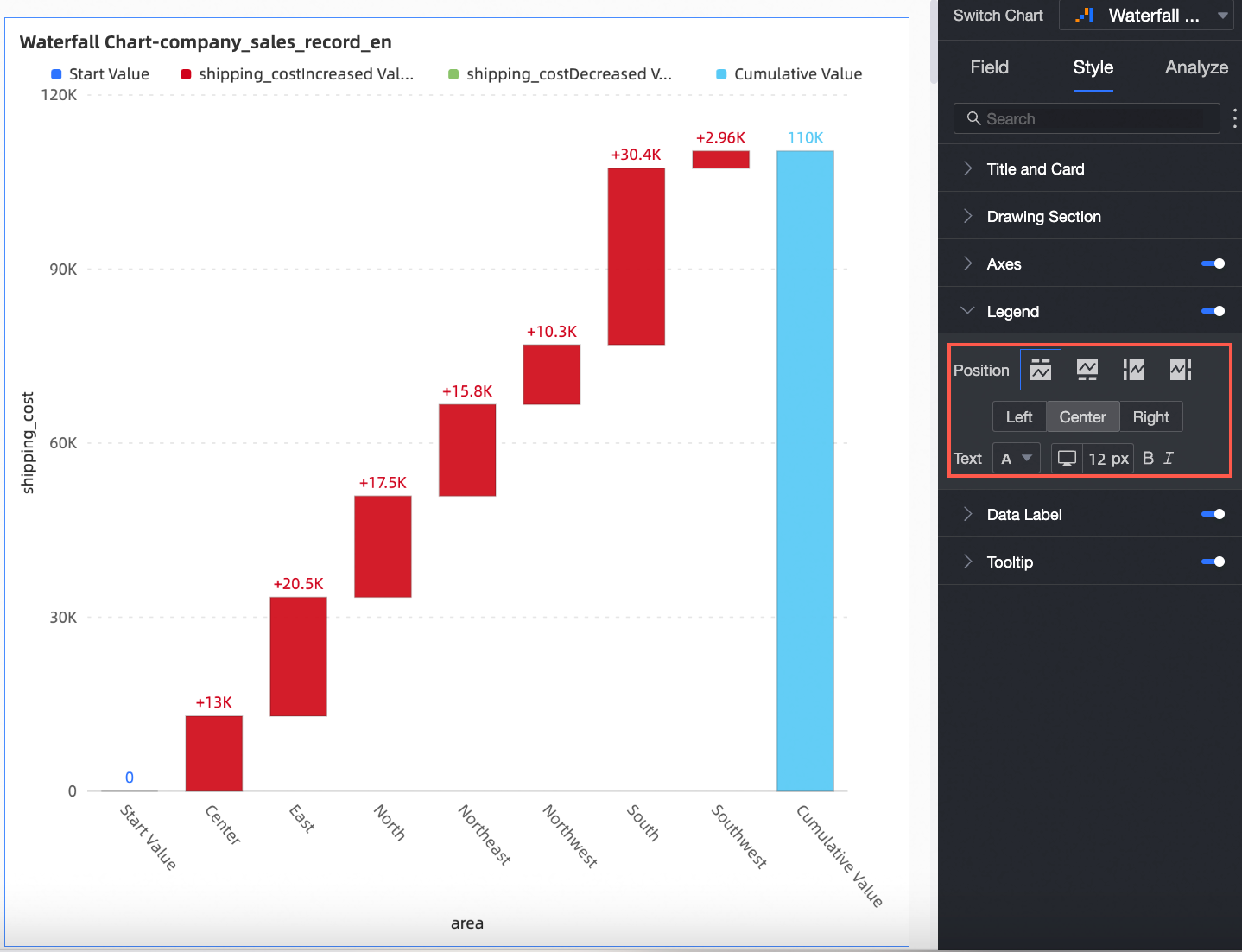
Chart configuration items
Descriptions of parameters
Position
Set the legend display position. The following four legend rendering methods are supported.

Text
Sets the legend text style.
In the label, set whether to display the label and the label style.
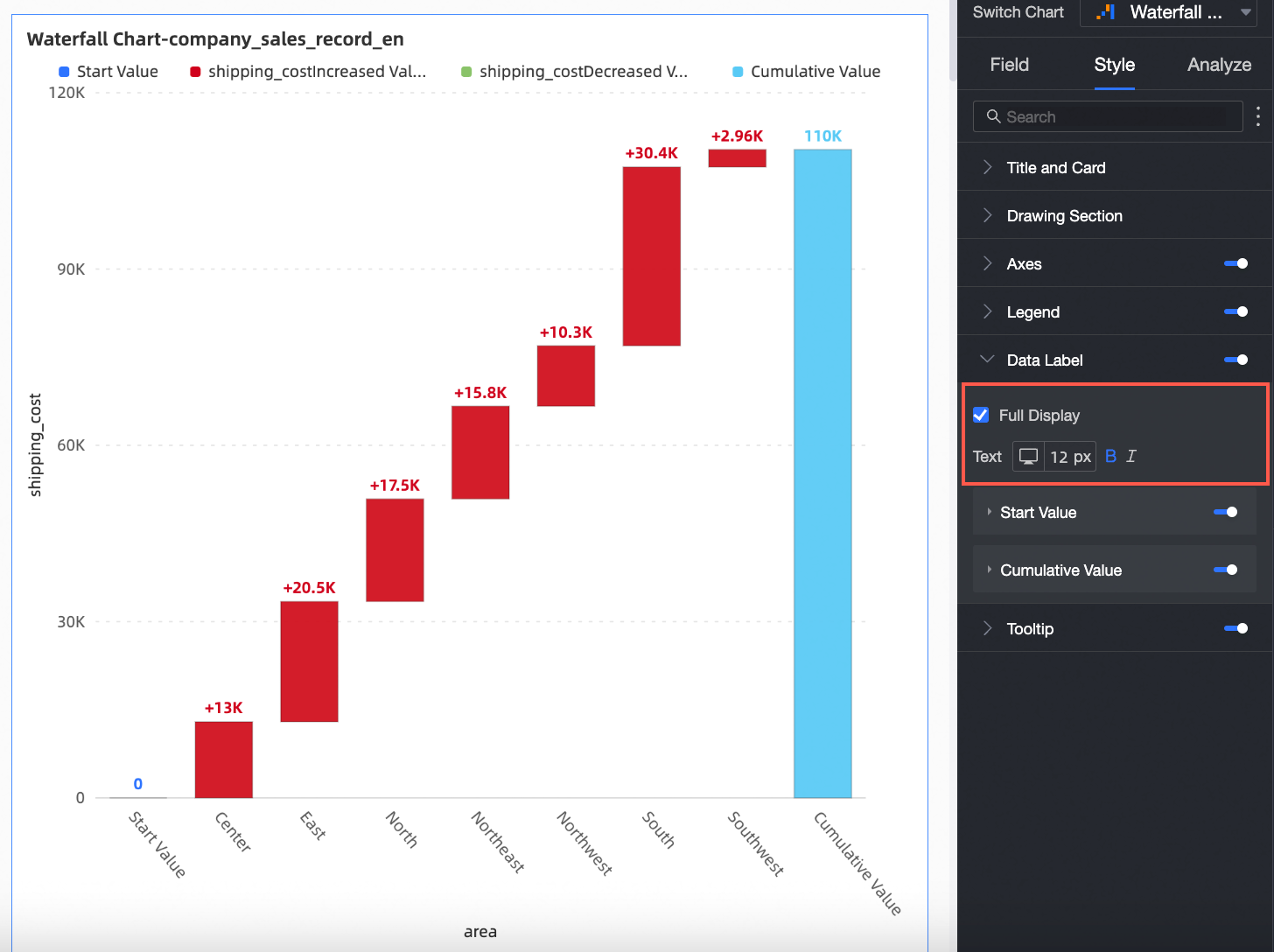
Chart configuration items
Descriptions of parameters
Full Display
Set whether to display full label.
Text
Sets the label text style.
Start Value
The label style of the start value. You can customize the alias or value of the start value and specify whether to display the Tips of the start value.
Cumulative Value
The label style of the cumulative value. You can customize the alias of the start value and specify whether to display the cumulative value Tips.
In the Tooltip section, configure the tooltip mode.
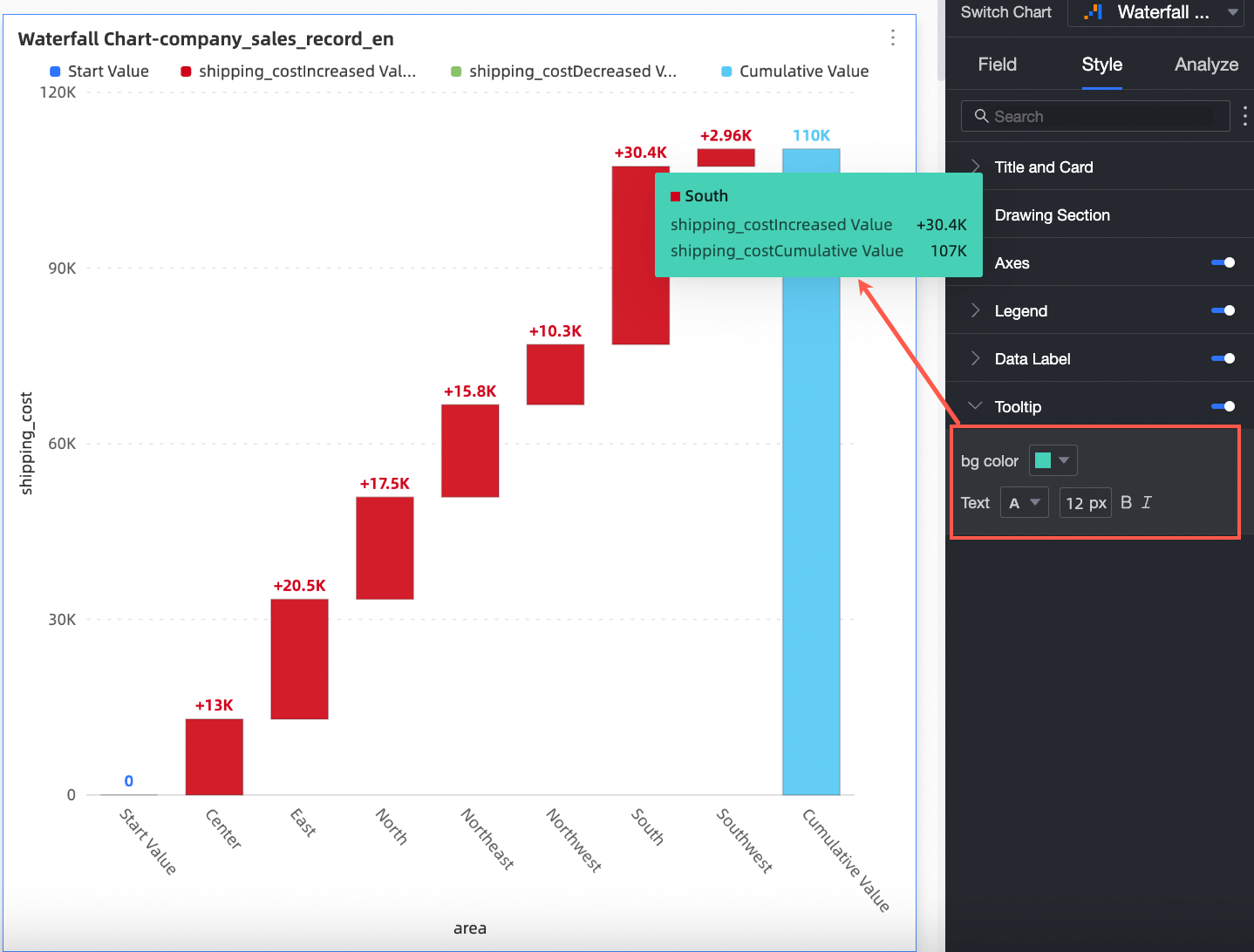
Chart configuration items
Descriptions of parameters
Background color
Set the background color.
Text
Sets the prompt text style.
Chart analysis configuration
Parameter | Field | Description |
Data interaction | Drill | If you have set the drill-down field in the Fields panel, you can set the drill-level row display style here. |
Linkage | If the data that you want to analyze belongs to different charts or tables, you can configure this feature to associate the charts and tables, and then analyze the data. For more information, see Linkage. | |
Hyperlink | If the data that you want to analyze belongs to different dashboards, you can configure this feature to associate the dashboards, and then analyze the data. You can set the Hyperlink parameter to Parameter or External Link. For more information, see Redirect. |
Limits
When you create a waterfall chart, you must specify Category Axis (Dim.) and Value Axis (Mea.).
You must specify at least one dimension for Category Axis (Dim.). such as province and product type.
You can specify only one measure for Value Axis (Mea.). such as order quantity or profit.
What to do next
You can share your dashboard with others. For more information, see Share a dashboard.
If you want to create a navigation menu for thematic analysis, you can integrate your dashboard into a business intelligence (BI) portal. For more information, see Create a BI portal.